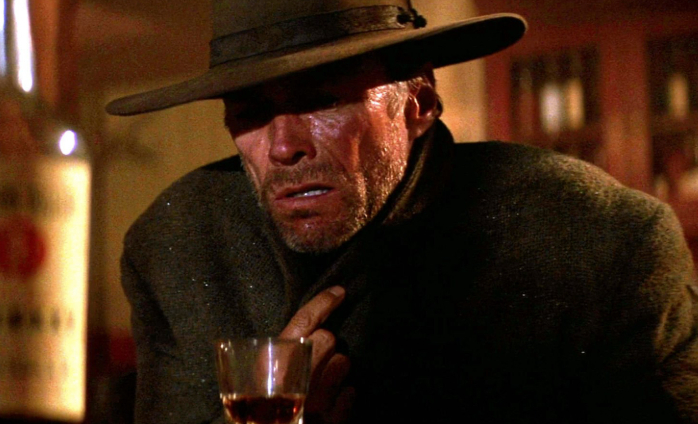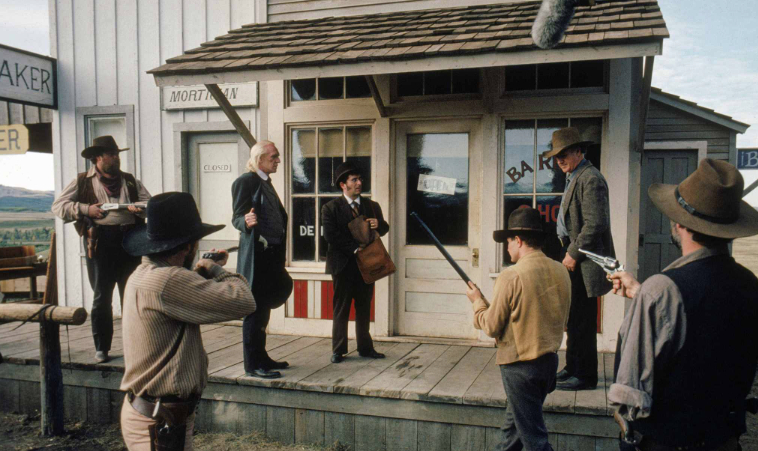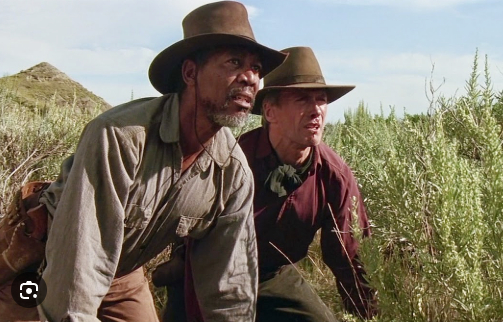Unforgiven: The Return (2025)
I. PLOT OVERVIEW
Unforgiven: The Return (2025) brings back William Munny (Clint Eastwood), the retired gunslinger who thought his violent past was behind him. Thirty-three years after he rode off into the fading light of the sunset, Munny has buried the bloodshed, the sins, and the ghosts of his previous life deep in the soil, seeking peace in the quiet of his old age. But in the unforgiving land of the frontier, peace is fleeting, and the past has a way of catching up with those who try to outrun it.
When violence resurfaces, threatening the lives of those he holds dear, Munny finds himself once again forced to confront the world he left behind. The West has changed—railroads stretch across the plains, lawmen now wear polished stars, and the killers of the new era wear suits rather than spurs. Yet, some truths remain immutable: justice still rides on horseback, and redemption never comes free.
Munny, now old, weathered, and unrelenting, must confront his own inner demons and the brutal men who seek to tear down the fragile peace he has tried to build. This final chapter in Munny’s journey is a haunting exploration of the cost of violence, the weight of the past, and the quest for redemption in a world that has moved on.
II. THEMES & EMOTIONAL DEPTH
Unforgiven: The Return revisits the central themes of violence, redemption, and the consequences of the past, while adding a new layer of reflection on legacy and the passage of time. Munny’s journey is no longer about seeking vengeance or seeking justice for others—it is about coming to terms with the weight of a life lived in conflict and bloodshed.

The film delves deeply into the moral ambiguity that defined the first Unforgiven and continues to haunt Munny in his later years. While the world has changed, the fundamental struggle between good and evil, right and wrong, remains. Munny’s past is full of bloodshed, and as the violence returns to his doorstep, he is forced to reckon with the man he once was and the man he has become. The film asks whether true redemption is ever truly attainable and whether the scars of the past can ever be healed, especially when the past comes knocking on the door.

The changing landscape of the West, with railroads and modern lawmen, provides a stark contrast to the lawless days of Munny’s youth, illustrating a West that has evolved but not necessarily for the better. The rise of corporate greed, political corruption, and the shifting nature of justice and power all play a role in the story, highlighting the tension between tradition and progress—and the idea that the more things change, the more they stay the same.
III. CHARACTER DEVELOPMENT AND PERFORMANCE
- Clint Eastwood as William Munny: Clint Eastwood returns to one of his most iconic roles with a powerful and reflective performance. Munny is no longer the young, ruthless gunslinger he once was; instead, he is an older man, weary from life’s battles, haunted by his past choices. Eastwood brings a depth to Munny’s character that captures the complexity of a man who has tried to leave violence behind but finds that it is a shadow that never truly fades. Munny’s struggle to reconcile his past with the peaceful life he desires makes him one of the most compelling characters in Western cinema.
- [Supporting Actor Name] as [New Character]: This new character, who plays a pivotal role in Munny’s reawakening to the violence of the world, is a perfect foil to Munny’s character. Whether they are an adversary or an ally, their dynamic with Munny serves as a reminder that the world is always changing, and Munny must adapt or be left behind. Their performance adds intensity and depth to the narrative, as their character embodies the new, corrupt forces rising in the West.
- [Actress Name] as [New Female Character]: Whether it’s a love interest, a mentor, or a family member, this female character brings emotional depth and complexity to the film. Her presence in Munny’s life helps remind him of the personal stakes involved in his choices, adding an emotional and humanizing element to the story.
- Supporting Cast: The film introduces several other key figures, including ruthless lawmen, outlaws, and victims of violence—each of whom plays a role in the story’s moral and emotional exploration. The supporting cast, particularly those playing villains and new allies, brings new dynamics to Munny’s world, providing both tension and unexpected moments of clarity for the protagonist.
IV. CINEMATOGRAPHY AND DIRECTION
Unforgiven: The Return captures the bleak beauty of the American frontier once again, using sweeping landscapes, golden deserts, and the rugged mountains to symbolize both the external harshness of the world and the inner turmoil of the characters. The cinematography contrasts the quiet moments of reflection with explosive action sequences, creating a balanced and dynamic visual experience.

The film’s pacing is deliberate, with long, lingering shots that allow for reflection on the past, paired with sudden bursts of violence that punctuate the film’s exploration of redemption and vengeance. The action is intense and gritty, with gunfights and confrontations that feel raw and unrelenting. The camera often focuses on close-ups of Munny’s weathered face, showing the toll that time and violence have taken on him.
The sound design and score add to the haunting atmosphere of the film. The music is sparse but powerful, underscoring the emotional weight of the narrative, while the sound of wind, gunshots, and horses’ hooves brings the audience into the heart of the West. The score is a fitting tribute to the classic Western genre while also adding modern touches that highlight the film’s more introspective themes.
V. FINAL VERDICT
Unforgiven: The Return (2025) is a poignant, haunting, and action-packed conclusion to the story of one of Western cinema’s most complex and iconic characters. Clint Eastwood’s return as William Munny is as emotionally gripping as it is powerful, bringing depth and reflection to the character’s final chapter. The film explores themes of redemption, violence, and the passage of time, making it not just a Western, but a meditation on the consequences of living a life filled with regret and bloodshed.
The stunning cinematography, intense performances, and thoughtful direction make Unforgiven: The Return a fitting end to the saga, offering both closure and reflection on the broader themes of justice, morality, and the inescapable weight of the past.
Rating: 9/10
A stunning and emotionally resonant Western that delivers on action, depth, and the powerful themes of redemption and survival. Unforgiven: The Return is a must-watch for fans of Clint Eastwood’s legacy and Western cinema.
